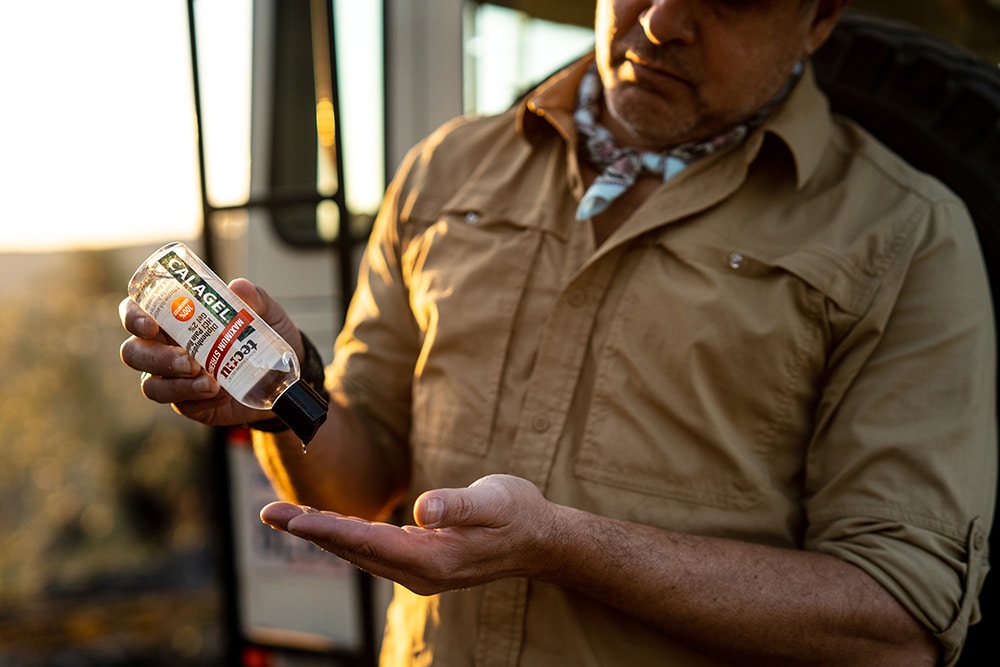Poison Ivy Blister Treatment: A Comprehensive Guide

Exploring nature can be refreshing, but poison ivy can make your outdoor trip uncomfortable and itchy. The strong resin in its leaves causes a rash that lasts for weeks. Don't worry; knowing how to treat poison ivy blisters can help reduce pain and make outdoor activities more enjoyable.
This guide will explain how you can get a poison ivy rash. It will also cover the different stages of the rash, ways to prevent it, and treatment options.
How Do You Get Poison Ivy Rash?
Picture this: you're hiking through the woods, and your skin brushes against poison ivy. Little do you know, this innocuous encounter could lead to a maddening rash. But how does it happen?
The culprit behind the poison ivy rash is urushiol, a resin found in poison ivy sap. Upon contact with the skin, urushiol can penetrate deep into its layers, causing an allergic reaction. Interestingly, not everyone is allergic to urushiol, but for those who are, even the slightest touch can cause a reaction.
What Causes Poison Ivy Rash?
You've brushed against poison ivy, and now you're left with an itchy, blistering rash. But what's happening beneath the surface?
Upon contact with urushiol - a toxic resin on poison ivy and poison oak - the body's immune system launches into action, recognizing it as a foreign invader. This triggers the release of histamines, compounds that promote inflammation and itching. This causes the skin to become red and swollen, and blisters develop, making for an uncomfortable experience.
How Does Poison Ivy Spread?
One of the most frustrating aspects of poison ivy rash is its ability to spread seemingly at will. But how does it manage to creep across your skin?
Contrary to popular belief, the rash itself isn't contagious. However, urushiol oil can easily transfer from one surface to another. Whether it's through scratching the affected area or touching contaminated items, such as clothing or gardening tools, the oil can spread and trigger new rashes. Pets can also play a role in spreading poison ivy, as they can carry the oil on their fur.
What are the Stages of Poison Ivy Rash?
Understanding the progression of poison ivy rash can help you better manage its symptoms. Typically, the rash unfolds in several stages:
- Contact: Initial exposure to urushiol results in contact dermatitis, characterized by redness and itching at the site of contact.
- Development: Over the next 12 to 48 hours, the rash intensifies, with the appearance of red bumps or blisters.
- Peak: The rash reaches its peak severity within 1 to 2 weeks, with blisters oozing fluid and causing intense itching.
- Resolution: Over the following weeks, the rash gradually subsides, with blisters drying up and forming crusts before eventually healing.
Poison Ivy and Histamine Response
To truly grasp poison ivy blister treatment, it's essential to understand the role of histamines in the body's response to urushiol exposure.
Histamines are chemicals the immune system releases in response to allergens like urushiol. Your immune system starts a chain reaction that triggers your body's cells to release the chemical histamine into the bloodstream. This is an effort for the body to protect itself. The histamine acts on a person's eyes, nose, throat, lungs, skin or gastrointestinal tract, causing allergy symptoms.
How to Prevent Poison Ivy Rash
Prevention is often the best defense against poison ivy rash. Here are some tips to minimize your risk of exposure:
- Learn to identify poison ivy and avoid contact with it.
- Wear protective clothing, such as long sleeves and pants, when hiking or gardening.
- Wash exposed skin with a specialized cleanser immediately after contact with poison ivy to remove urushiol.
- Keep all tools clean. After gardening, wipe your tools to remove any resin or urushiol. Tecnu Detox Wipes are a convenient option.
Treatment for Poison Ivy Blisters
If, despite your best efforts, you find yourself with a poison ivy rash, don't fret. Here's what you can do to alleviate symptoms and promote healing:
- Cleanse the affected area with a specialized poison ivy cleanser like Tecnu Original Outdoor Skin Cleanser to remove any remaining urushiol.
- Apply cold compresses or cool baths to soothe itching and inflammation. You can also use Tecnu Rash Relief Spray to stop itching and discomfort fast.
- Use Tecnu Calagel Pain Relieving Gel to prevent further itching or discomfort.
- Avoid scratching the rash to prevent infection and further irritation.
Poison ivy is a common obstacle for outdoor activities, but armed with the knowledge of how it spreads, progresses, and can be treated, you can navigate its challenges with confidence. By understanding the mechanisms underlying poison ivy rash and adopting preventive measures, you can minimize your risk of exposure and enjoy the great outdoors itch-free. And should you find yourself face-to-face with poison ivy, remember: prompt treatment and patience are your best allies in conquering the itch.




